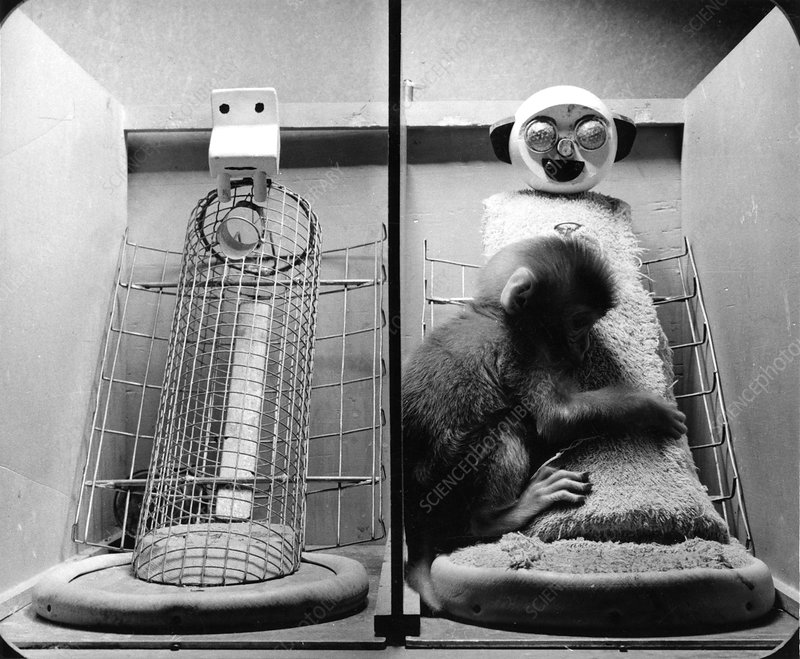
Aims
- To demonstrate that mother love (attachment) was not based on the feeding bong between the mother and infant, but rather the contact comfort
Procedure
- Harlow created two wire ‘mothers’ - one was wrapped in soft cloth, the other just wire
- 8 monkeys were studies for 165 days
- For 4 monkeys, a milk bottle was on the cloth-covered mother
- For the other 4 monkeys, the milk bottle was on the wire mother
- The amount of time each infant spent with the two mothers was measured
- Observations were also made of the monkey infants’ responses when frightened
Findings
- All 8 monkeys spent most of their time with the cloth-covered mother despite having the feeding bottle or not
- Those feeding from the wired mother only spent a short amount of time there
- The baby monkeys cuddled the soft cloth mother in preference to the wire one
- They sought comfort from the cloth one when frightened
Long-Lasting Effects
- Harlow continued to study his monkeys as they grew up
- The motherless monkeys, even those who had contact comfort, developed abnormally
- Socially abnormal and sexually abnormal
- There was a critical period for these effects
- If the motherless monkeys pent time with their monkey ‘peers’, they seemed to recover, but only if before they were 3 months old
Conclusion
The findings suggest that infants do not develop an attachment to the person who feeds them, but rather the person who offers contact comfort.